Abstract
Twenty-eight patients with scleroderma were compared with 22 healthy age-matched subjects. Monoclonal antibodies were used to detect the whole T cell population (OKT3), T helper cells (OKT4), and T suppressor/cytotoxic cells (OKT8) by indirect immunofluorescence on isolated peripheral blood mononuclear cells. A subset of scleroderma patients (i.e. 30% or eight of 28 patients) exhibited an elevated ratio of OKT4/OKT8 cells which could be accounted for, mainly by a reduction in OKT8 cells compared with controls. The scleroderma patients with an elevated OKT4/OKT8 ratio tended to be younger, have a shorter disease duration and more extensive skin involvement than patients with a normal OKT4/OKT8 ratio. There was no correlation with the presence of autoantibodies, drug therapy, or HLA-DR type. In order to further determine whether this imbalance in immunoregulatory cell subpopulations was specific for scleroderma, we further studied 16 patients with psoriatic arthritis but without manifest autoimmunity and delineated a similar subset of patients with an elevated OKT4/OKT8 cell ratio (i.e. 38% or six of 16 patients). The results demonstrate similar immunoregulatory T cell imbalances in patients with scleroderma and psoriatic arthritis. These findings suggest that numerical imbalances in lymphocyte subpopulations may not be specific for autoimmune disorders.
Full text
PDF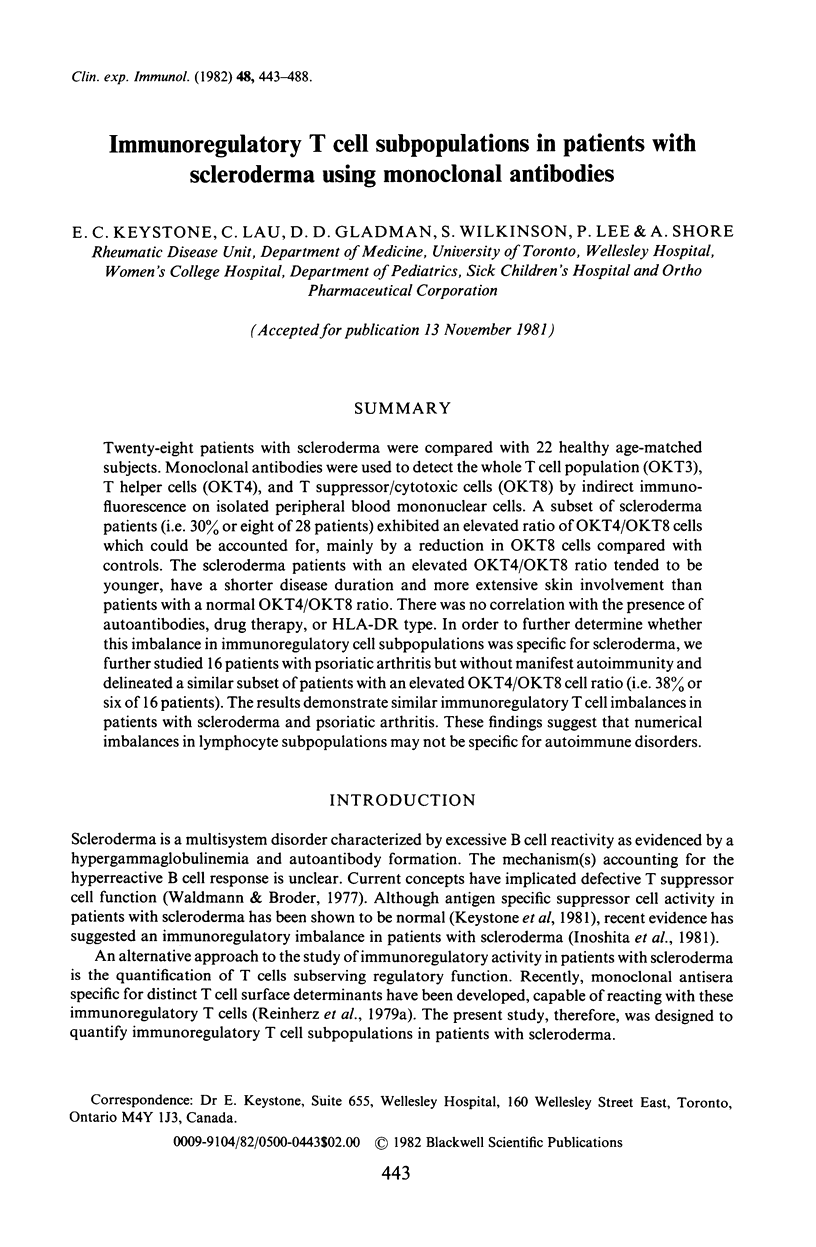
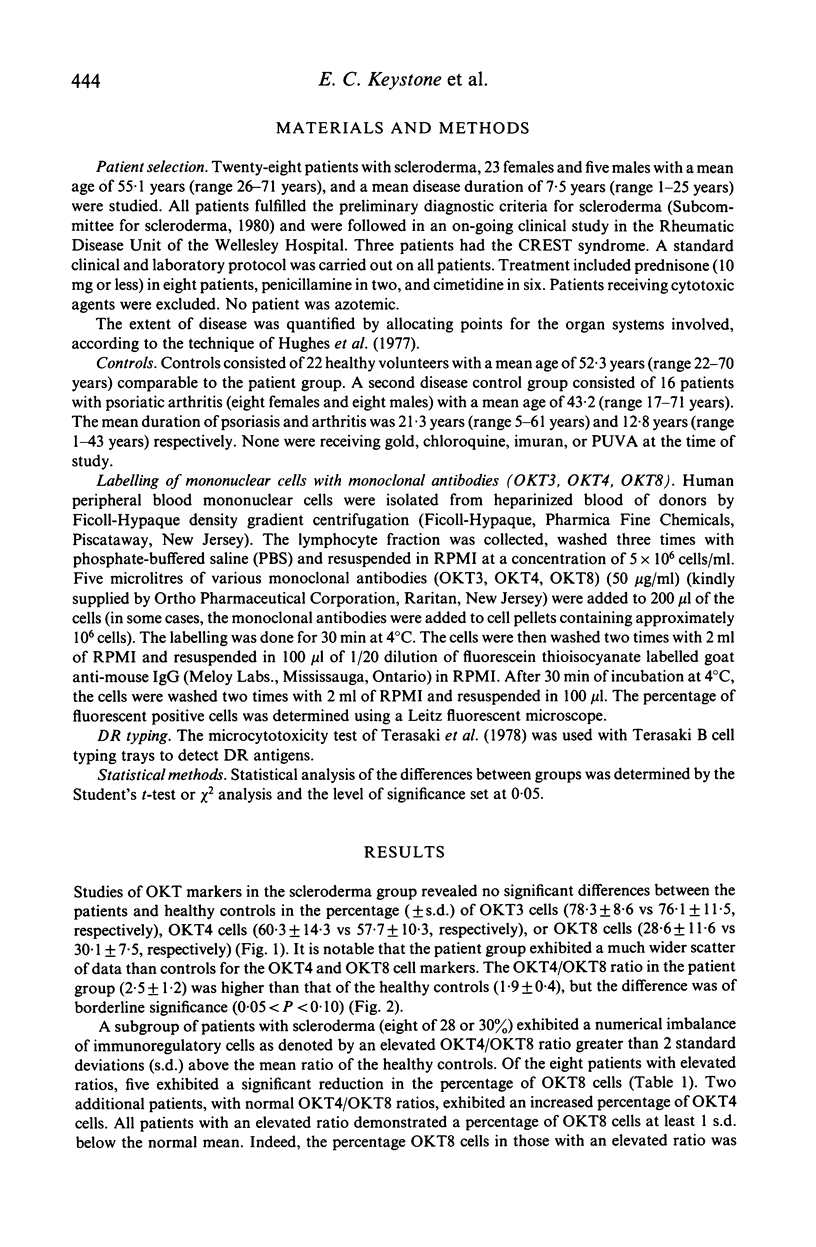
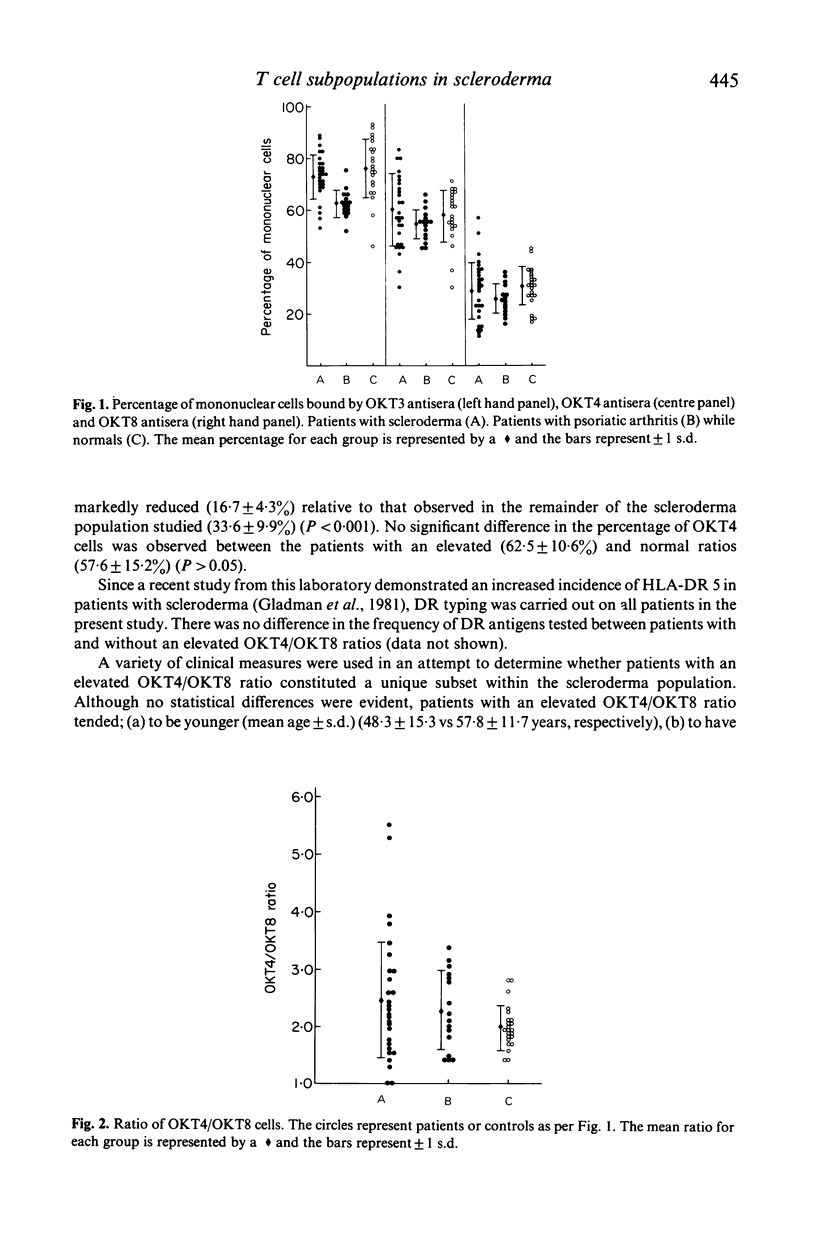
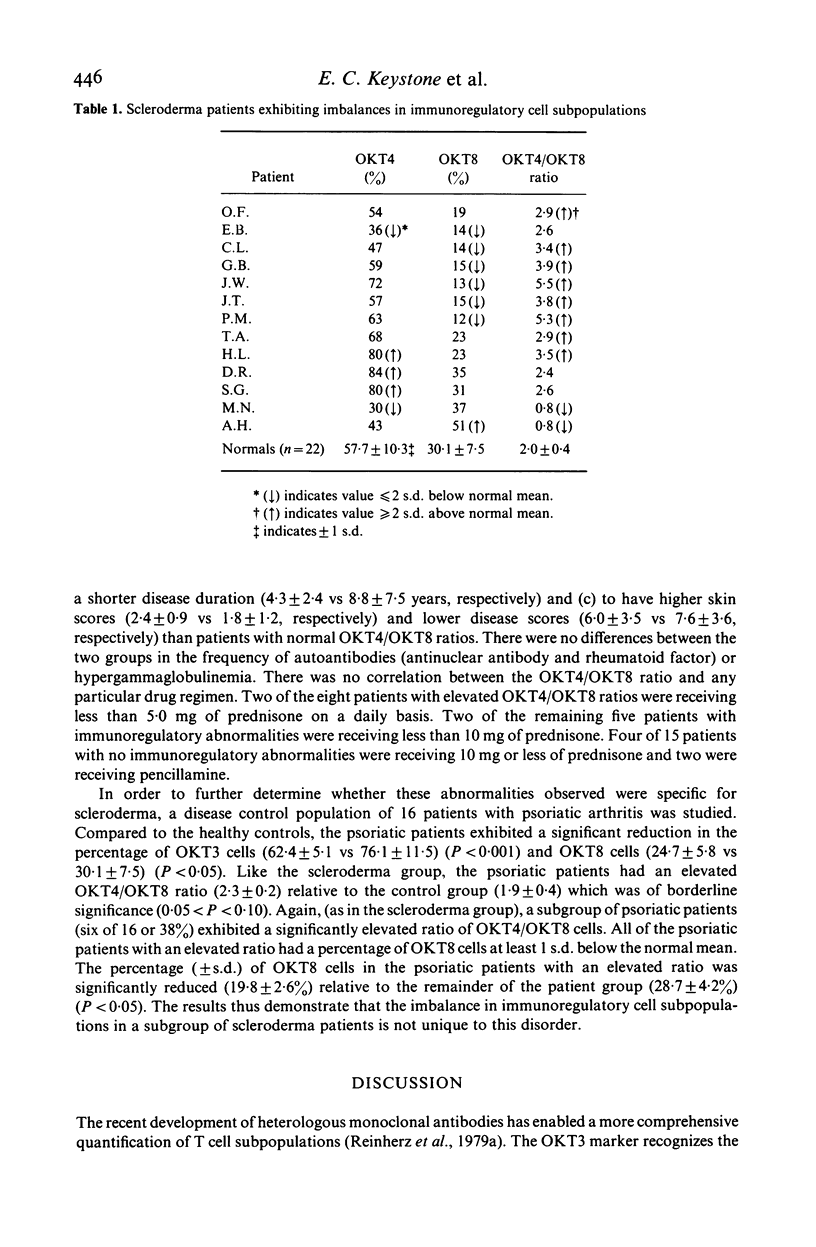
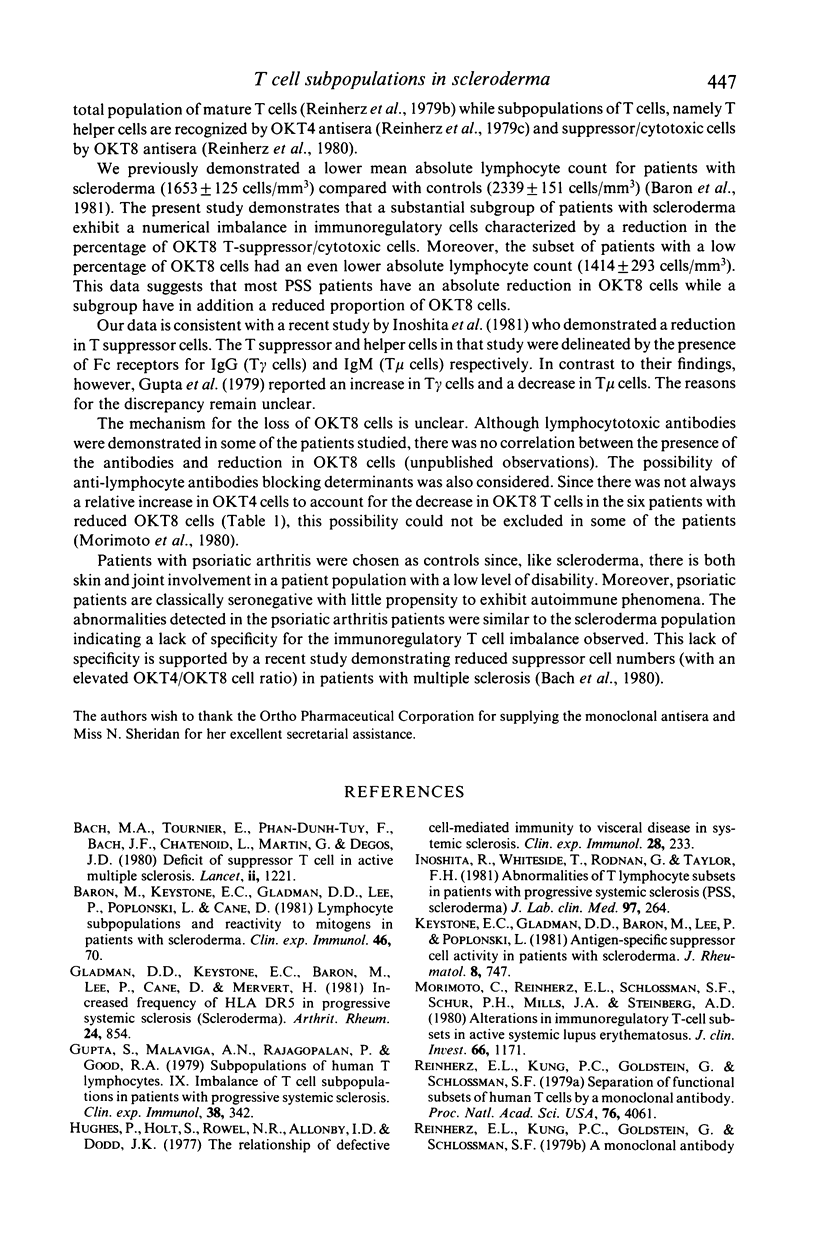
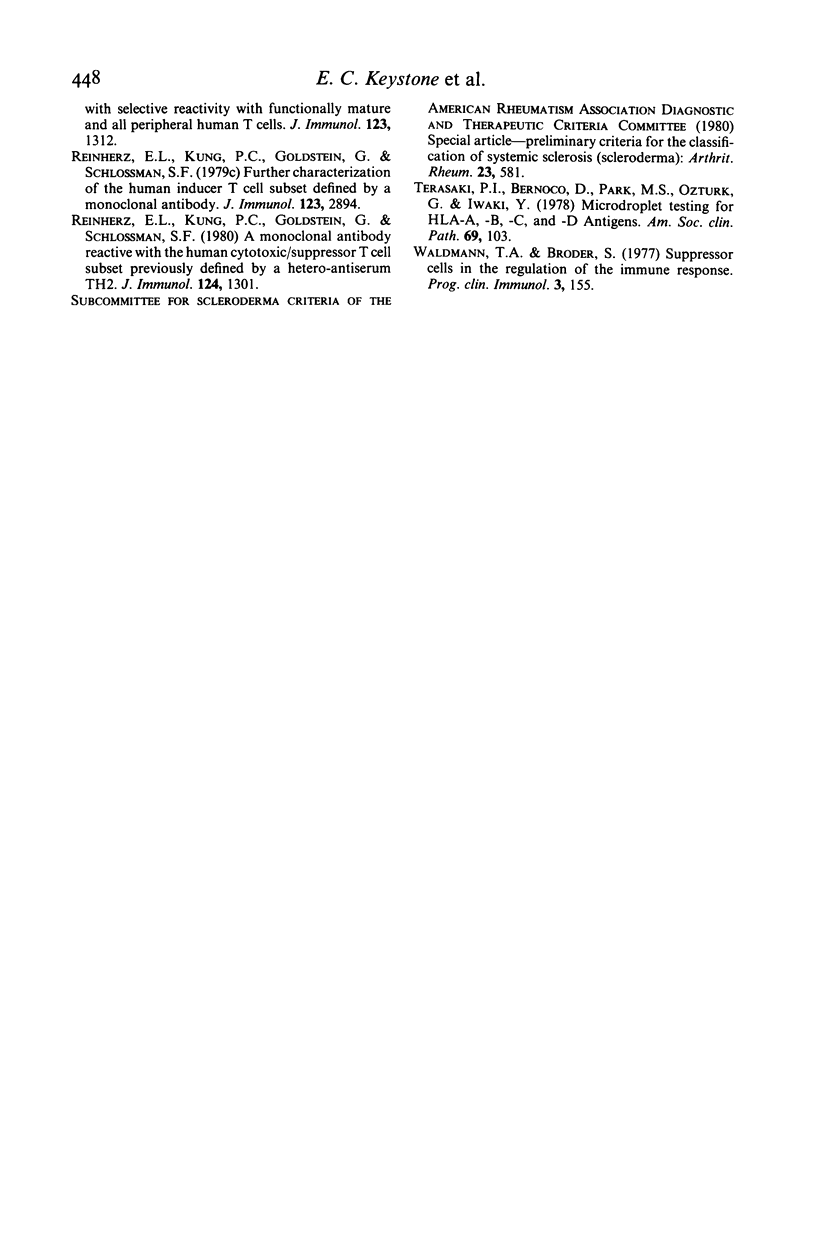
Selected References
These references are in PubMed. This may not be the complete list of references from this article.
- Bach M. A., Phan-Dinh-Tuy F., Tournier E., Chatenoud L., Bach J. F., Martin C., Degos J. D. Deficit of suppressor T cells in active multiple sclerosis. Lancet. 1980 Dec 6;2(8206):1221–1223. doi: 10.1016/s0140-6736(80)92480-0. [DOI] [PubMed] [Google Scholar]
- Baron M., Keystone E. C., Gladman D. D., Lee P., Poplonski L. Lymphocyte subpopulations and reactivity to mitogens in patients with scleroderma. Clin Exp Immunol. 1981 Oct;46(1):70–76. [PMC free article] [PubMed] [Google Scholar]
- Gladman D. D., Keystone E. C., Baron M., Lee P., Cane D., Mervert H. Increased frequency of HLA-DR5 in scleroderma. Arthritis Rheum. 1981 Jun;24(6):854–856. doi: 10.1002/art.1780240614. [DOI] [PubMed] [Google Scholar]
- Gupta S., Malaviya A. N., Rajagopalan P., Good R. A. Subpopulations of human T lymphocytes. IX. Imbalance of T cell subpopulations in patients with progressive systemic sclerosis. Clin Exp Immunol. 1979 Nov;38(2):342–347. [PMC free article] [PubMed] [Google Scholar]
- Hughes P., Holt S., Rowell N. R., Allonby I. D., Janis K., Dodd J. K. The relationship of defective cell-mediated immunity to visceral disease in systemic sclerosis. Clin Exp Immunol. 1977 May;28(2):233–240. [PMC free article] [PubMed] [Google Scholar]
- Inoshita T., Whiteside T. L., Rodnan G. P., Taylor F. H. Abnormalities of T lymphocyte subsets in patients with progressive systemic sclerosis (PSS, scleroderma). J Lab Clin Med. 1981 Feb;97(2):264–277. [PubMed] [Google Scholar]
- Keystone E. C., Gladman D. D., Baron M., Cane D., Poplonski L. Antigen-specific suppressor cell activity in patients with scleroderma. J Rheumatol. 1981 Sep-Oct;8(5):747–751. [PubMed] [Google Scholar]
- Morimoto C., Reinherz E. L., Schlossman S. F., Schur P. H., Mills J. A., Steinberg A. D. Alterations in immunoregulatory T cell subsets in active systemic lupus erythematosus. J Clin Invest. 1980 Nov;66(5):1171–1174. doi: 10.1172/JCI109948. [DOI] [PMC free article] [PubMed] [Google Scholar]
- Reinherz E. L., Kung P. C., Goldstein G., Schlossman S. F. A monoclonal antibody reactive with the human cytotoxic/suppressor T cell subset previously defined by a heteroantiserum termed TH2. J Immunol. 1980 Mar;124(3):1301–1307. [PubMed] [Google Scholar]
- Reinherz E. L., Kung P. C., Goldstein G., Schlossman S. F. A monoclonal antibody with selective reactivity with functionally mature human thymocytes and all peripheral human T cells. J Immunol. 1979 Sep;123(3):1312–1317. [PubMed] [Google Scholar]
- Reinherz E. L., Kung P. C., Goldstein G., Schlossman S. F. Separation of functional subsets of human T cells by a monoclonal antibody. Proc Natl Acad Sci U S A. 1979 Aug;76(8):4061–4065. doi: 10.1073/pnas.76.8.4061. [DOI] [PMC free article] [PubMed] [Google Scholar]
- Terasaki P. I., Bernoco D., Park M. S., Ozturk G., Iwaki Y. Microdroplet testing for HLA-A, -B, -C, and -D antigens. The Phillip Levine Award Lecture. Am J Clin Pathol. 1978 Feb;69(2):103–120. doi: 10.1093/ajcp/69.2.103. [DOI] [PubMed] [Google Scholar]
- Waldmann T. A., Broder S. Suppressor cells in the regulation of the immune response. Prog Clin Immunol. 1977;3:155–199. [PubMed] [Google Scholar]


